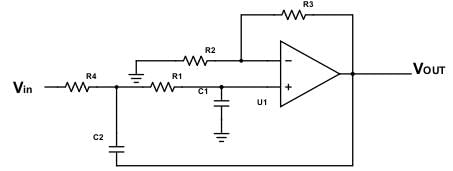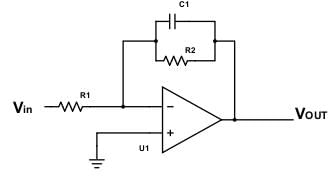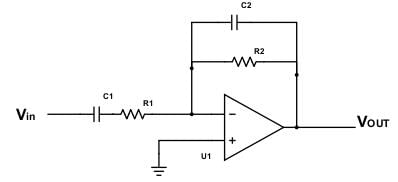Test: Frequency Filters - Electronics and Communication Engineering (ECE) MCQ
10 Questions MCQ Test - Test: Frequency Filters
Consider the circuit below and find its cut-off frequency.

R1=10kΩ, R2=20kΩ, R3=30kΩ, C1=2nF, C2=4nF, R4=15kΩ.

R1=10kΩ, R2=20kΩ, R3=30kΩ, C1=2nF, C2=4nF, R4=15kΩ.
For a low pass filter of non-inverting type, the cutoff frequency is 2kHz and the input frequency is 4kHz. Find the phase shift in output.
When the input frequency is equal to the cutoff frequency, how much is the phase shift in the output?
In a low pass filter as below, find the cut-off frequency for the following circuit.

Given that R1=20kΩ, R2=25kΩ, C1=10nF.
For the circuit, calculate the phase shift.

It is given that R1=20kΩ, C1=2nF, R2=22kΩ, and input signal is 2sin6π103t.
Given that the maximum gain of a low pass filter using op-amp is 5.5 and the resistor R1 = 10kΩ, find the value of R2.
Which is not a difference between active and passive filter?






















